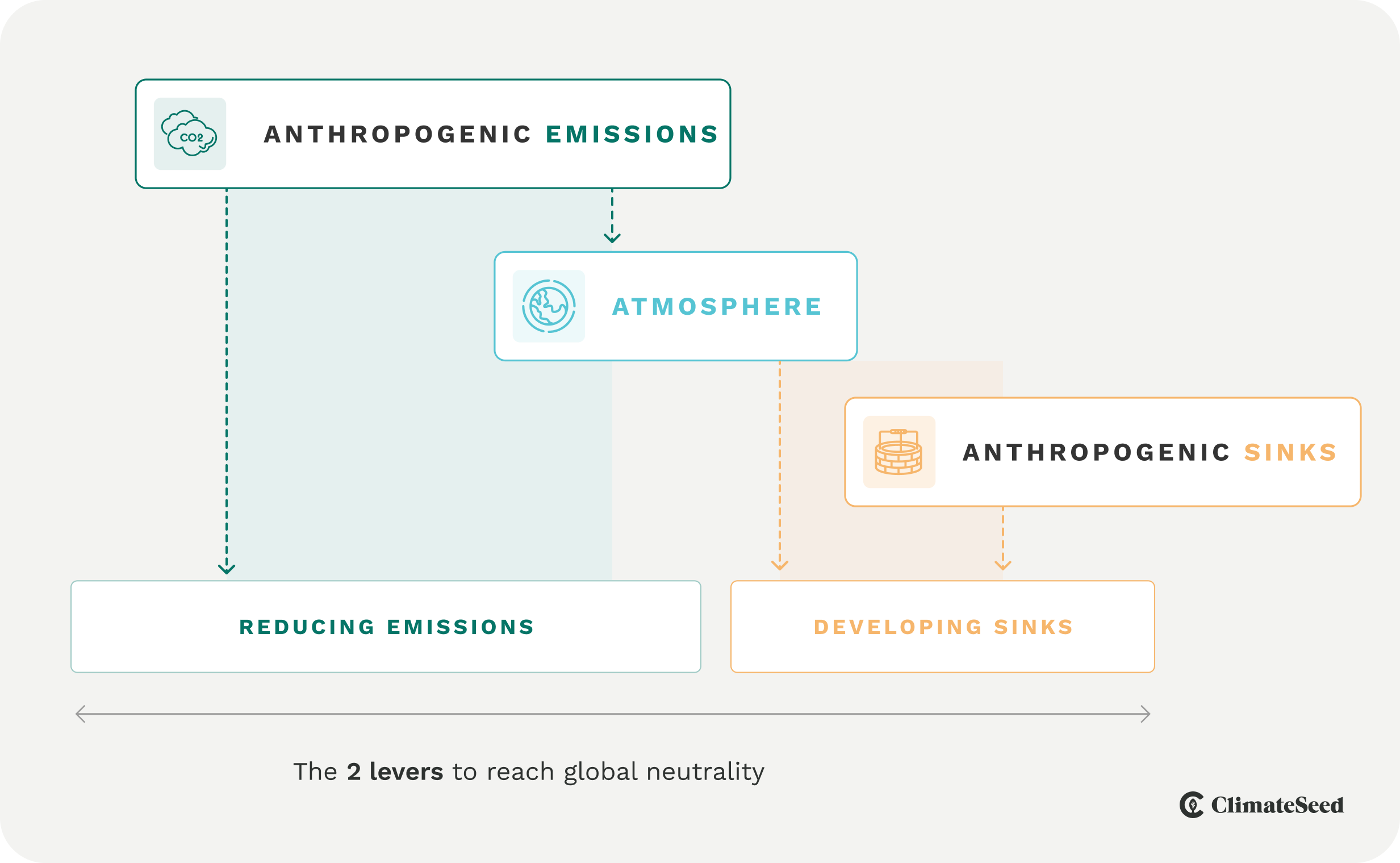Net Zero Initiative a framework for collective carbon neutrality
ClimateSeed is proud to be one of the first 13 signatories of the Net Zero Initiative's “10 Principles for an Ambitious Climate Strategy” and to participate in working groups since 2020.
What is a Net Zero Initiative ?
Launched in 2018, Net Zero Initiative is a project by Carbone 4, financially supported by ADEME, the Ministry of Ecological Transition, and twenty-one companies. Its goal is to provide a comprehensive and rigorous framework to help organizations achieve and sustain carbon neutrality, with a strong focus on the actual reduction of emissions and positive contributions to the fight against climate change.
To this end, Net Zero Initiative offers a unique framework to guide private sector action towards the only meaningful carbon neutrality goal: that of the planet and the national territory.
Context
Due to the consequences of human activity over the past centuries, many planetary boundaries are being reached or are on the verge of being crossed (ocean acidification, biodiversity loss, land-use change, global water use, etc.).
One of these boundaries is the concentration of CO₂ and other greenhouse gases in the atmosphere, which is directly linked to the increase in the Earth's average global temperature, leading to climate disruptions.
To limit the temperature rise to +1.5°C above pre-industrial levels, climate science indicates that it is essential to reach a balance between global emissions and global CO₂ removals by 2050. This balance is known as planetary carbon neutrality or 'net-zero emissions.'

In France, the National Low-Carbon Strategy (SNBC) aims to achieve this balance between emissions and removals within the national territory by 2050. To reach net zero, the two levers to be activated at both the global and national levels are reducing emissions and increasing carbon sinks.
Net zero initiative
3 pillars for companies to take action towards global carbon neutrality

The 3 pillars
Reducing their direct and indirect emissions by following a 1.5°C compatible pathway
Helping others to reduce their emissions, through the sales of solutions that decarbonize their customers and through the financing of emissions avoidance projects outside their value chain.
Removing carbon from the atmosphere through the development of carbon sinks, both in and out of their value chain
The 10 NZI principles for an ambitious climate action
In 2021-2022, Net Zero Initiative collaborated with around forty climate change professional organizations, including ClimateSeed, to co-create a framework that helps businesses align their strategies with global carbon neutrality goals.
The main goal of climate action is to limit warming to the target temperature set out in the Paris Agreement, by immediately mobilising resources to collectively attain net zero GHG emissions at the global level during the second half of the century.
A corporate climate strategy must aim at making the company's activities compatibles with a world of net zero emission by 2050, and contributing at the just level to reach this objective of global net zero emissions through different paths of action.
A company has three levers by which it can organise its climate strategy: reduce the emissions of its value chain, help others to reduce their emissions, and develop carbon sinks. These levers must be assessed, objectivised, managed and reported separately.
For most of their activities, reduction at the just level and at the just speed of direct and indirect emissions must be an absolute priority of a company's climate strategy.
The assessment of the company's GHG footprint must cover at least all the direct and significant indirect emissions.
Companies are faced with the inevitable and urgent need to set reduction goals for their carbon footprint. For a credible climate strategy, these objectives must be consistent with 1.5° or well below 2°C carbon budgets. These goals must be specified for medium and long-term time frames.
A climate strategy only has value if it leads to real reductions of the company's GHG emissions, in line with the trajectory pursued. To achieve this, it is vital to define a company transformation plan that must be followed and managed dynamically. Companies must give themselves the means to achieve their ambitions.
Further to their action to reduce their value chain emissions, companies are encouraged to contribute to decarbonation beyond the perimeter of their carbon footprint, on the one hand by developing a range of products and services that decarbonize their clients, and on the other hand, by financing additional emission reductions outside their value chain.
In addition to their action to reduce their value chain emissions and contribute to the decarbonation of society (emission avoidance), companies are encouraged to contribute at the just level to the sustainable capture of CO2 in carbon sinks, by acting in priority within their value chains.
Companies are invited to communicate transparently and sincerely on their climate strategy, by placing emphasis on their concrete results, and by using indicators and elements of language that contribute to promoting a rigorous approach to climate change.
Contact us to discuss your climate strategy

